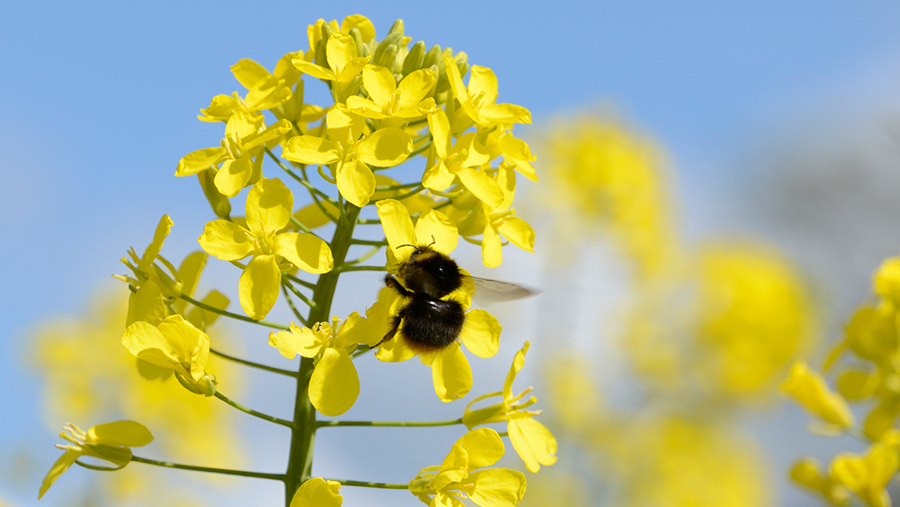Study shows not all neonic seed treatments harm bees
 Free use from DSV press briefing
Free use from DSV press briefing New research suggests that one of the three banned neonicotinoid seed treatment actives does not have an adverse effect on bee health.
Back in December 2013, the EU banned the use of neonicotinoid seed treatments on mass-flowering crops, like oilseed rape, due to fears over bee health.
See also: OSR breeder adapts to life without neonics
The restrictions covered three seed treatment active ingredients – thiamethoxam, clothianidin and imidacloprid.
However, new research led by Chris Connolly, a researcher at the Centre for Environmental Change and Human Resilience at the University of Dundee, has discovered key differences between the actives.
He found that clothianidin did not result in the same detrimental effects on bee colonies as its close chemical relatives imidacloprid and thiamethoxam.
“There has been growing concern over the risk to bee populations from neonicotinoid insecticides and their long-term consequences to essential ecosystem services and food security,” said Dr Connolly.
“Our knowledge of the risk of neonicotinoids to bees is based on studies of imidacloprid and thiamethoxam and these findings have generally been extrapolated to clothianidin.”
However, in this study he looked at the three neonicotinoids in parallel.
“What we have found is that imidacloprid and thiamethoxam, but not clothiandin, exhibit toxicity to bumblebee colonies when exposed at field-relevant levels.
“There was also further variation in the effects on bees between the three insecticides. So we can clearly see that the banned neonicotinoids are not the same, so they should be considered independently when considering risk and legislation.”
From his findings, he believes it is premature to place a permanent ban on the use of clothianidin. “That said, a moratorium on its use should continue until the knowledge gaps are filled on its wider impact on other species.”
Researchers from both the University of Dundee and the University of St Andrews tested 75 bee colonies at five separate locations in Scotland. The full results were published in the journal Scientific Reports.

